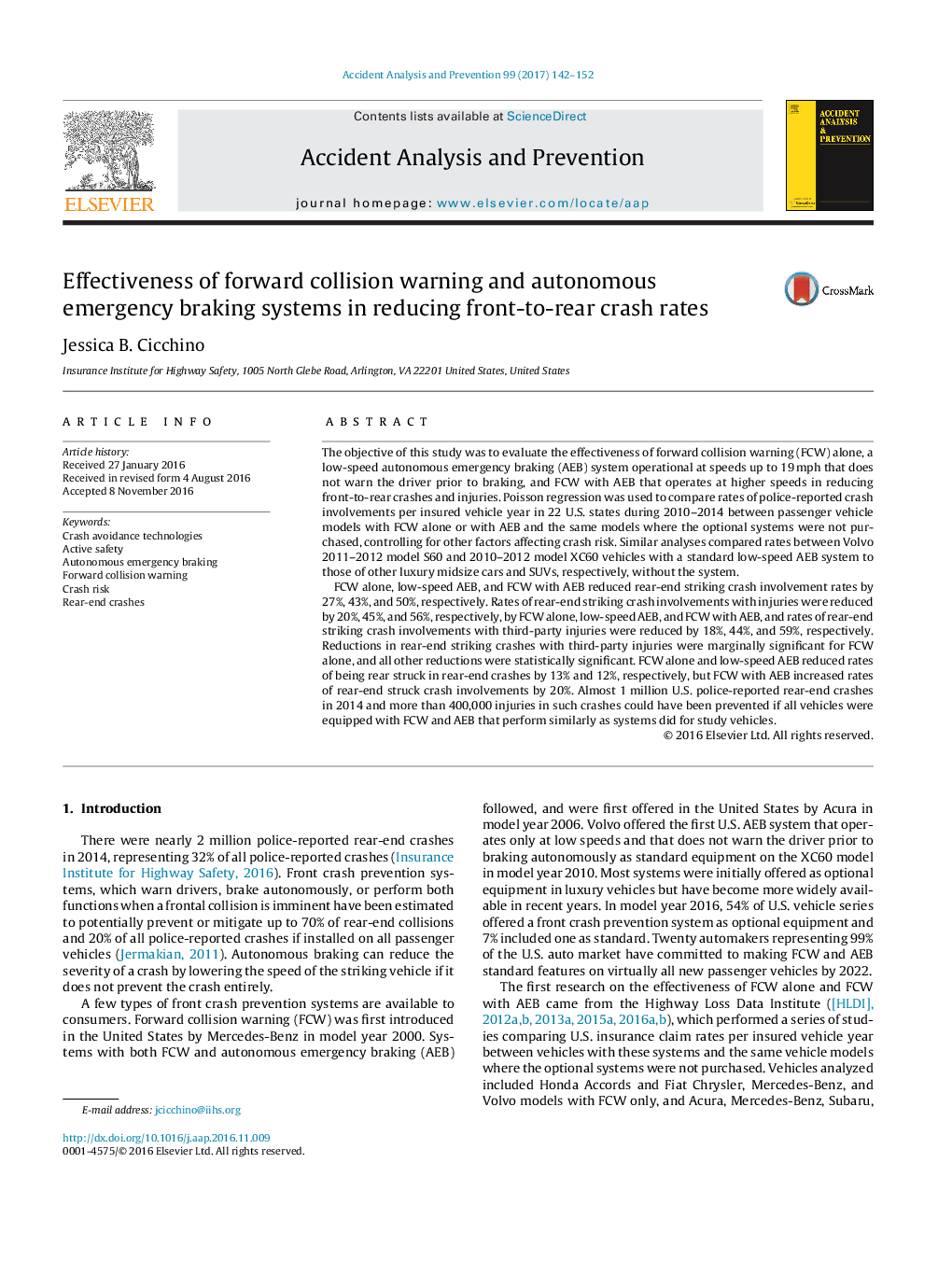| Article ID | Journal | Published Year | Pages | File Type |
|---|---|---|---|---|
| 4978870 | Accident Analysis & Prevention | 2017 | 11 Pages |
Abstract
FCW alone, low-speed AEB, and FCW with AEB reduced rear-end striking crash involvement rates by 27%, 43%, and 50%, respectively. Rates of rear-end striking crash involvements with injuries were reduced by 20%, 45%, and 56%, respectively, by FCW alone, low-speed AEB, and FCW with AEB, and rates of rear-end striking crash involvements with third-party injuries were reduced by 18%, 44%, and 59%, respectively. Reductions in rear-end striking crashes with third-party injuries were marginally significant for FCW alone, and all other reductions were statistically significant. FCW alone and low-speed AEB reduced rates of being rear struck in rear-end crashes by 13% and 12%, respectively, but FCW with AEB increased rates of rear-end struck crash involvements by 20%. Almost 1 million U.S. police-reported rear-end crashes in 2014 and more than 400,000 injuries in such crashes could have been prevented if all vehicles were equipped with FCW and AEB that perform similarly as systems did for study vehicles.
Keywords
Related Topics
Physical Sciences and Engineering
Chemical Engineering
Chemical Health and Safety
Authors
Jessica B. Cicchino,
